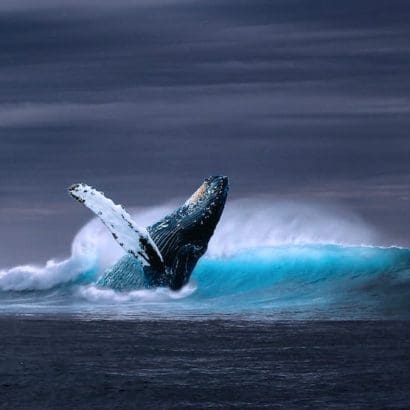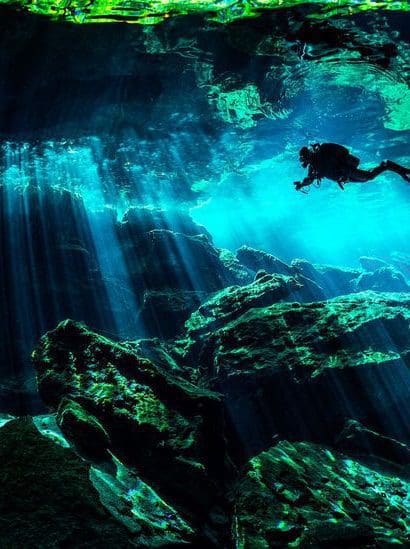
The underwater world holds an incredible array of natural marvels, and among them, underwater caves and cenotes stand out as captivating wonders. Exploring these submerged realms unveils breathtaking landscapes and unveils the secrets of ancient geological formations. In this article, we will delve into the enchanting realm of underwater caves and cenotes, shedding light on their formation, characteristics, and the importance of their preservation. Join us on this fascinating journey as we unravel the mysteries of these subaquatic wonders.
Contents
- Formation of Underwater Caves and Cenotes.🐟
- Exploration and Characteristics of Underwater Caves.🐟
- Description of the activity of exploring underwater caves and the role of specialized divers:
- Mention of some of the world’s most famous underwater caves, such as the Cave of Crystals in Mexico:
- Highlighting the unique characteristics of underwater caves, such as the formation of underwater stalactites and stalagmites:
- The Fascinating Submerged Cenotes.🐟
- Conservation and Protection of these Subaquatic Wonders.🐟
- The Importance of Appreciating and Preserving Underwater Caves and Cenotes.🐟
Formation of Underwater Caves and Cenotes.🐟
Underwater caves and cenotes are formed through fascinating geological processes. These subaquatic formations are a result of intricate natural phenomena that have taken place over thousands of years. Let’s explore the general information about the formation of underwater caves and cenotes, along with the following points: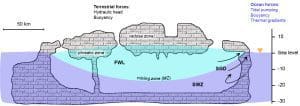
Description of the geological processes that give rise to underwater caves and cenotes:
Underwater caves and cenotes are predominantly formed through the action of water on soluble rock formations. These formations are typically found in areas with limestone or other soluble rocks, which are prone to dissolution over time. The continuous movement and force of water, along with other geological factors, contribute to the creation of these remarkable subaquatic features.
Explanation of how marine caves are formed through water erosion and other factors:
Marine caves are primarily formed by the relentless erosion of water over extended periods. As waves crash against coastal cliffs or rocky shorelines, they gradually carve out hollow cavities within the rock, forming intricate cave systems. The erosive power of the water, coupled with the presence of cracks and faults in the rock, leads to the enlargement and deepening of these caves.
Mention of the factors contributing to the formation of underwater cenotes, such as the dissolution of limestone rocks:
Underwater cenotes are unique formations primarily found in regions with limestone bedrock. The formation process begins with the dissolution of the limestone by acidic groundwater or rainwater. Over time, as the acidic water permeates through the rock, it gradually erodes and creates interconnected networks of underground passages and chambers. Eventually, the roofs of these subterranean chambers may collapse, forming cenotes, which are natural sinkholes that expose the subterranean water bodies.
Exploration and Characteristics of Underwater Caves.🐟
Exploring underwater caves is a thrilling and challenging endeavor that unveils remarkable discoveries about our planet’s hidden realms. Specialized divers play a crucial role in the exploration of these captivating underwater environments. Let’s delve into the general information about the exploration of underwater caves, along with the following points:
Description of the activity of exploring underwater caves and the role of specialized divers:
Exploring underwater caves requires a unique set of skills, knowledge, and equipment. Specialized cave divers undergo extensive training to navigate through submerged passages and chambers, often in low visibility conditions. They utilize advanced diving techniques, including the use of guidelines and specialized gear, to ensure safe and successful explorations. These divers play a vital role in mapping cave systems, conducting scientific research, and documenting the unique features found within these underwater wonders.
Mention of some of the world’s most famous underwater caves, such as the Cave of Crystals in Mexico:
The world is home to numerous renowned underwater caves that captivate the imagination of explorers and scientists alike. One such example is the Cave of Crystals located in Mexico’s Naica Mine. This cave is renowned for its enormous gypsum crystals, some reaching up to 11 meters in length. Other notable underwater caves include the Ox Bel Ha system in Mexico, the Orda Cave in Russia, and the Cenote Angelita in Mexico.
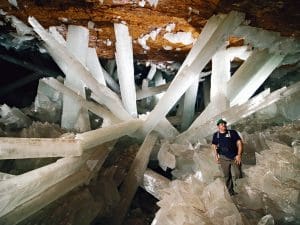
Highlighting the unique characteristics of underwater caves, such as the formation of underwater stalactites and stalagmites:
Underwater caves exhibit distinct features that set them apart from their terrestrial counterparts. The continuous dripping of mineral-rich water from the cave ceiling gives rise to spectacular formations known as underwater stalactites. These icicle-like structures grow downwards, while underwater stalagmites rise from the cave floor, formed by mineral deposits accumulating over time. The mesmerizing formations of stalactites and stalagmites in underwater caves create a surreal and enchanting environment for divers to explore.
The Fascinating Submerged Cenotes.🐟
Submerged cenotes are awe-inspiring natural features that hold great significance in both geological and cultural contexts. Let’s explore some general information about submerged cenotes and delve into the following points:
Explanation of what cenotes are and their importance in Maya culture:
Cenotes are natural sinkholes formed by the collapse of limestone bedrock, exposing groundwater underneath. These geological formations have played a vital role in the cultural and spiritual traditions of the ancient Maya civilization. The Maya considered cenotes to be sacred portals to the underworld, known as Xibalba. They were used for ceremonial purposes, as well as a source of freshwater for the communities residing in the region.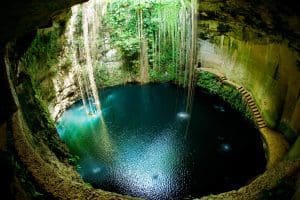
Description of the characteristics of submerged cenotes, such as their crystalline water and the marine life they harbor:
Submerged cenotes possess distinctive features that make them captivating ecosystems. The pristine, crystal-clear water found in cenotes is a result of natural filtration processes through the limestone. This exceptional water clarity provides an extraordinary visibility for divers and allows them to witness the intricate underwater formations and diverse marine life. Cenotes often serve as habitats for various species of fish, crustaceans, and aquatic plants, creating a vibrant and unique ecosystem.
Mention of notable submerged cenotes, such as the Gran Cenote in the Riviera Maya:
The Riviera Maya region in Mexico boasts numerous remarkable submerged cenotes, each offering a distinct experience. One prominent example is the Gran Cenote, renowned for its stunning underwater cave formations and the abundance of marine life. Diving or snorkeling in the Gran Cenote allows visitors to immerse themselves in a surreal world of stalactites, stalagmites, and turquoise waters teeming with colorful fish. Other noteworthy submerged cenotes include Dos Ojos, Ik Kil, and Calavera Cenote.
Conservation and Protection of these Subaquatic Wonders.🐟
Conserving and protecting underwater caves and cenotes is of utmost importance to ensure the preservation of these natural marvels. Let’s explore some general information about the conservation and protection efforts, along with the following points: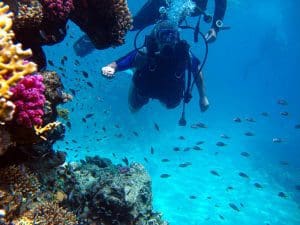
Highlighting the importance of conserving and protecting underwater caves and cenotes:
Underwater caves and cenotes are fragile ecosystems that are susceptible to human impacts and environmental changes. Preserving these subaquatic wonders is crucial for maintaining biodiversity, protecting geological formations, and safeguarding cultural heritage. Additionally, these unique habitats contribute to scientific research and offer educational opportunities, making their conservation essential for future generations.
Mention of the challenges and threats faced by these ecosystems, such as pollution and irresponsible tourism:
Underwater caves and cenotes face numerous challenges and threats that can disrupt their delicate balance. Pollution from human activities, including the improper disposal of waste or chemicals, poses a significant risk to the water quality and overall health of these ecosystems. Irresponsible tourism practices, such as overcrowding, unauthorized access, and damage to formations, can also have detrimental effects on the fragile underwater environments.
Description of conservation efforts and measures being taken to protect these natural wonders:
Recognizing the importance of conservation, various initiatives and measures are being implemented to safeguard underwater caves and cenotes. These efforts include the establishment of protected areas and marine reserves, where regulations and guidelines are enforced to minimize human impacts. Additionally, public awareness campaigns and educational programs are raising awareness about the fragility and significance of these subaquatic ecosystems, promoting responsible and sustainable tourism practices.
The Importance of Appreciating and Preserving Underwater Caves and Cenotes.🐟
The appreciation and preservation of underwater caves and cenotes hold significant importance in our world. These remarkable subaquatic wonders offer a glimpse into the hidden depths of our planet and hold valuable ecological, geological, and cultural significance.
Firstly, appreciating underwater caves and cenotes allows us to acknowledge the immense beauty and diversity they possess. These submerged landscapes, adorned with stunning stalactites, stalagmites, and crystal-clear waters, create a mesmerizing environment that captivates the senses. By recognizing their aesthetic value, we develop a deeper connection to these underwater realms and develop a greater appreciation for the wonders of nature.


